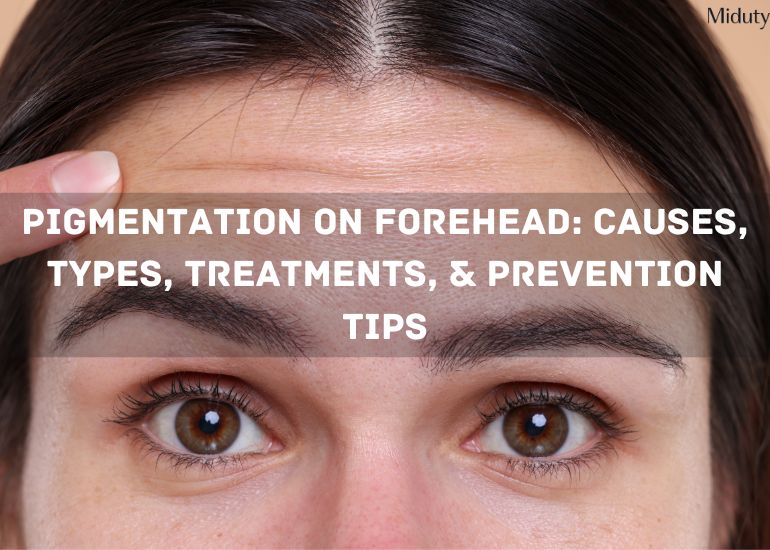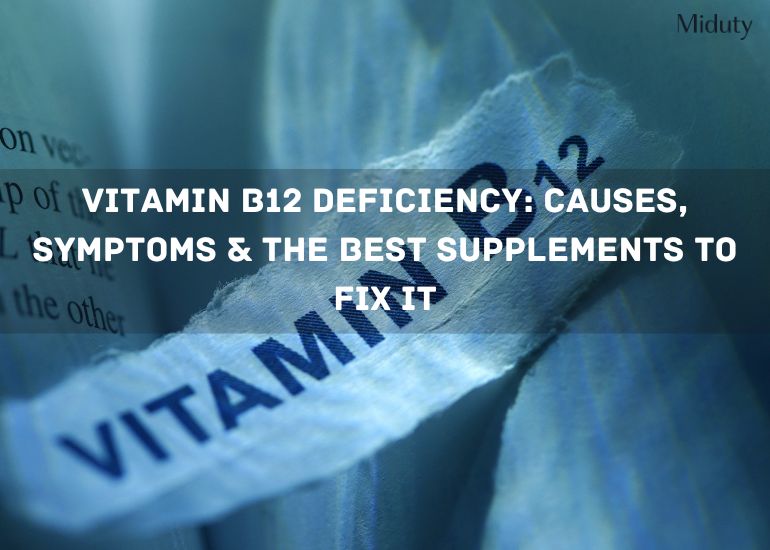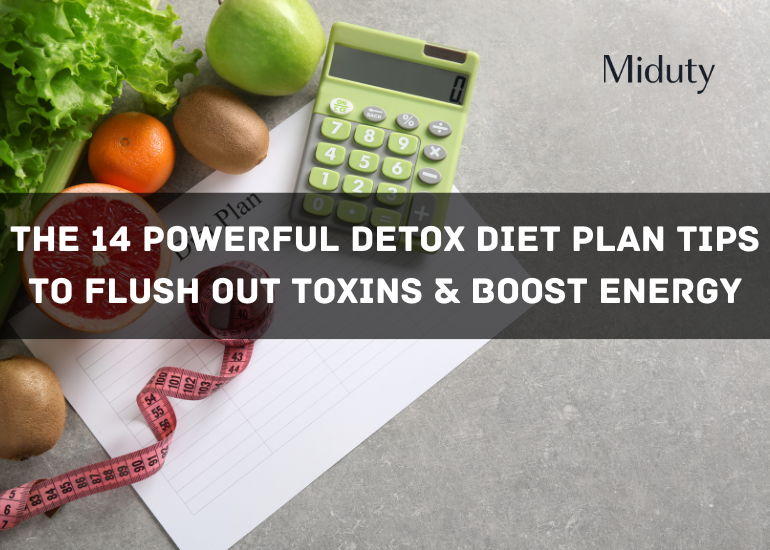
Pigmentation on Forehead: Causes, Types, Treatments, & Prevention Tips
Pigmentation on Forehead: Causes, Types, Treatments, & Prevention Tips
Key Takeaways
1) Pigmentation on the Forehead: A common skin issue affecting around 20-30% of women aged 40-65, but it can impact both men and women.
2) Role of Melanin: Pigmentation occurs due to increased melanin production, which can be triggered by various factors.
3) Main Causes: Sun exposure, hormonal changes, skin inflammation, genetics, aging, and lifestyle factors like stress and certain hair care products.
4) Types of Pigmentation: Includes melasma, sunspots, and post-inflammatory hyperpigmentation (PIH).
5) Effective Treatments: Sun protection, a targeted skincare routine, home remedies, and professional treatments such as chemical peels and laser therapy.
6) Preventive Measures: Consistent use of sunscreen, a balanced diet, hydration, and stress management.

Pigmentation on the forehead is something many women know all too well. Whether it's dark spots from sun exposure, hormonal changes, or just life's little skin quirks, those uneven patches can hit our confidence hard.
We've all been there, feeling like our skin isn't "perfect" enough to go makeup-free or worried about how others might see us. It's frustrating when these little marks on our face can feel like they define us, but remember: our worth isn't in our complexion.
Pigmentation on the forehead is quite a bothersome concern for many of us, prevalent in approx 20-30% of women in the age group of 40-65 years. It is one of the most noticeable and challenging skin concerns that one may have to address. However, the condition may appear in both men and women. [1].
To know from the basics, melanin produced from the melanocytes (melanin-producing cells) is responsible for the pigment in our skin and our unique complexion. Certain kinds of disorders and health conditions can alter the body's natural melanin production to make the skin look pigmented or dark around the forehead.
With this growing number of cases of hyperpigmentation on the forehead, it is important to know the potential causes behind pigmentation on the forehead and what forehead pigmentation treatment can work for you.
In this article, we'll go through what hyperpigmentation on the forehead is, possible reasons for forehead pigmentation, and some effective treatments that one may count on.
Table of Contents
1. What is Pigmentation on Forehead?
2. Causes of Forehead Pigmentation
3. Types of Hyperpigmentation on Forehead
6. Conclusion
7. FAQs on Pigmentation on Forehead
8. References
What is Pigmentation on Forehead?

Hyperpigmentation is a condition when the patches on some areas of skin get darker than the surrounding skin. This darkening of the skin happens because of excessive melanin production and there might be several reasons behind these dark spots, patches, or uneven skin tone as a result of hyperpigmentation on the forehead.
Though such dark patches can appear as small patches on the entire body, the most common part of the body to be affected by hyperpigmentation is the forehead.
Forehead pigmentation varies greatly from sun exposure or constant friction while swiping the sweat. Additionally, allergies from some hair care products or hormonal fluctuations may also be a reason behind pigmentation on the forehead. We will study these causes in detail in the later sections.
Also Read: What is Pigmentation on Face?: Reasons & Effective Home Remedies
Causes of Forehead Pigmentation
There could be a wide range of causes associated with pigmentation on the forehead affecting the way your skin produces and distributes melanin which is responsible for skin color. Before jumping on to any forehead pigmentation treatment, you should know what is causing you hyperpigmentation on the forehead. [2] Here are some of the primary forehead pigmentation causes:
1) Sun Exposure: Sun can be both, your skin's best friend, while it can be your enemy too. So taking care of your skin from UV radiation is the key to healthy skin. Excessive sun exposure stimulates more melanin production, resulting in uneven skin tone, or dark patches on the forehead.
2) Hormonal Changes: Hormonal shifts are one of the major reasons for hyperpigmentation on the forehead. These hormonal shifts can be because of pregnancy, PCOS/PCOD conditions, or menopause. Melasma is often known as the "Mask of Pregnancy". Not only this, if you are on any hormonal medications like birth control pills, your chances of pigmentation on your forehead get higher.
3) Skin Trauma or Inflammation: Inflammation from several reasons like acne, eczema, or any other skin issues can make the melanocytes trigger, making them overproduce melanin pigment. Such conditions leave dark marks on the skin as well that are hard to go. This kind of inflammation is known as Post-Inflammatory Hyperpigmentation (PIH). the condition can persist even long after the skin issue has been resolved.
4) Genetics: Some people are predominantly overexposed to conditions like pigmentation on the forehead as the forehead is very much exposed to sun and pigmentation being genetically in the DNA, you can be more prone to such conditions.
5) Aging: Aging slows down the ability of your skin to renew itself and makes the melanin cells less efficient in balancing the melanin pigment. This makes the age spots or pigmentation on the forehead more prominent.
6) Lifestyle Factors: Stress and environmental pollutants can affect your skin's ability to regenerate. Additionally, the allergic reaction to some hair care products or hair dye can be a cause of hyperpigmentation on the forehead.
Types of Hyperpigmentation on Forehead
|
Types |
Description |
|
Melasma |
Melasma often appears as symmetrical patches on the forehead and other parts of the face. It's commonly triggered by hormonal changes and tends to affect women more than men. [3][4] |
|
Sunspots (Sun Lentigines) |
Sunspots, also called age spots or liver spots, are caused by long-term sun exposure. They usually appear on sun-exposed areas, like the forehead, and tend to get darker over time. |
|
Post-Inflammatory Hyperpigmentation (PIH) |
This type of pigmentation develops after an inflammatory response, such as acne or a skin injury. The condition may heal but leaves behind darkened areas on the forehead or other parts of the face. |
Treatment Options for Hyperpigmentation on Forehead
While pigmentation may take time to fade depending on the reason behind it; several treatments can help you manage pigmentation on the forehead. Let's look at some effective forehead pigmentation treatment methods that include sun protection, skincare routines, home remedies, over-the-counter creams, and professional treatments. [5]
I. Sun Protection
Sun protection is the key factor to manage hyperpigmentation on the forehead and also to prevent it from worsening. Here are a few tips for you:
- Use a High-SPF Sunscreen: Broad-spectrum sunscreens with SPF 30 or higher can prevent UV damage and stop pigmentation from becoming more noticeable. Apply generously to the forehead and reapply every two hours if you're outside. [6]
- Physical Sun Protection: Hats, sunglasses, and even carrying a sun umbrella can reduce sun exposure on your forehead and help manage pigmentation.
- Avoid Peak Sun Hours: The sun's rays are strongest between 10 AM and 4 PM. Limiting your exposure during these hours can help prevent forehead pigmentation from darkening.
II. Skincare Routine for Pigmentation Reduction

Incorporating specific ingredients into your skincare routine can help fade pigmentation on the forehead over time. Some suggestions include:
- Vitamin C: Known for its antioxidant properties, Vitamin C can help reduce hyperpigmentation on the forehead by neutralizing free radicals that damage the skin. Using a Vitamin C serum in your skincare regimen, followed by sunscreen, can provide brightening effects.
- Niacinamide: Niacinamide, a form of Vitamin B3, works by evening out skin tone and reducing redness. It also supports the skin barrier, making it less susceptible to further pigmentation on the forehead or entire face.
- AHAs and BHAs: Regular exfoliation with alpha hydroxy acids (AHAs) and beta hydroxy acids (BHAs) or any other exfoliants that suit your skin, can help remove dead skin cells, promoting the growth of new skin. This can improve the appearance of pigmentation. Remember to use them in moderation as they may disrupt your skin barrier in the long term.
- Retinoids: Retinoids, derivatives of Vitamin A, encourage skin cell turnover and collagen production. Regular use of retinoids can help fade pigmentation, though they may initially cause dryness or irritation, so it's best to start slow.
III. Home Remedies for Forehead Pigmentation

For those looking to address pigmentation naturally, here are some effective home remedies:
- Aloe Vera Gel: Aloe vera contains a compound called aloin, which has skin-lightening properties. Applying pure aloe vera gel to the forehead daily may help reduce pigmentation over time.
- Turmeric and Honey Mask: Turmeric has anti-inflammatory properties, while honey is a natural humectant. Mixing these can help brighten pigmented areas and improve skin texture.
- Green Tea: Green tea extract is packed with antioxidants that can help reduce pigmentation. Applying green tea bags directly to the affected area or using products with green tea extract can be beneficial. [7]
IV. Professional Treatments for Forehead Pigmentation
If home remedies don't bring about the desired results, professional treatments may be worth considering. These are some options: [8].
- Chemical Peels: Chemical peels involve applying an acidic solution to exfoliate the outer layer of skin, allowing newer, less pigmented skin to emerge. It's typically recommended for sunspots and melasma.
- Laser Therapy: Laser treatments use targeted light to break up pigmentation and stimulate collagen production. Different types of lasers work best depending on the pigmentation type, so consult a dermatologist for the most effective option.
- Microdermabrasion: This procedure uses tiny crystals to gently exfoliate the outer skin layer, promoting new cell growth. Microdermabrasion is typically suitable for milder pigmentation cases.
- Microneedling: Microneedling involves tiny needles that create small punctures in the skin, stimulating collagen production and helping improve skin tone. It can be effective for pigmentation and general skin rejuvenation.
V. Internal Protection with Supplements
Internal protection focuses on boosting skin health through targeted nutrients. Certain supplements can help reduce pigmentation and promote a clearer, more even complexion. Key ingredients include:
- Omega-3 Fatty Acids: Found in fish oil and flaxseed, omega-3s support the skin's moisture barrier, reduce inflammation, and promote a healthy glow.
- Astaxanthin: This powerful antioxidant, derived from algae, helps protect the skin from oxidative stress and UV damage, preventing premature aging and dark spots.
- N-Acetyl Cysteine (NAC): NAC is known for its ability to fight oxidative damage and support glutathione levels in the body, helping to lighten skin pigmentation and improve skin tone over time.
Try Miduty Liver Detox
Preventive Tips for Pigmentation on Forehead and Face
Prevention is key in managing pigmentation, particularly in areas like the forehead. Here are some effective strategies to help keep pigmentation under control:
1) Daily Use of Sunscreen: Consistently using sunscreen is one of the most effective ways to prevent pigmentation. Remember to reapply every two hours when outdoors.
2) Stay Hydrated: Drinking adequate water daily supports skin health and helps flush out toxins, which can indirectly impact pigmentation issues.
3) Balanced Diet: Include foods rich in antioxidants like Vitamin C and E (such as citrus fruits, tomatoes, broccoli, sunflower seeds, etc), which help protect skin cells from damage.
4) Avoid Touching or Picking Skin: If you have acne or any skin irritation, resist the urge to pick at it, as this can lead to post-inflammatory hyperpigmentation.
5) Manage Stress: Chronic stress can affect hormones, leading to skin issues. Incorporating stress-reducing practices like meditation or regular exercise can benefit overall skin health.Conclusion
Pigmentation on the forehead is common and there can be various factors in the list of forehead pigmentation causes, including sun exposure, hormones, and skin inflammation. Although it can be persistent, there are several effective forehead pigmentation treatments available, from at-home skincare routines and dietary adjustments to professional treatments like chemical peels and laser therapy. It's also essential to practice preventive measures, such as using sunscreen daily and maintaining a healthy skincare regimen.
Understanding the cause of hyperpigmentation on the forehead is the first step toward finding a suitable treatment plan. For persistent or bothersome pigmentation, consulting a dermatologist can provide insights into tailored treatments that work best for your skin type and lifestyle. With a consistent approach, you can improve the appearance of forehead pigmentation and maintain an even skin tone.

Frequently Asked Questions on Pigmentation on Forehead
Q1 - Is Vitamin C good for pigmentation?
Yes, using Vitamin C in your skincare routine can give major benefits in terms of reducing pigmentation on the forehead. Moreover, you can add Vitamin C-rich food sources like citrus fruits, berries, leafy greens, etc. in your diet for more sustainable results.
Q2 - Why is my forehead so dark?
There can be several factors affecting the melanin pigment in your skin. Some of these factors may include genetics, sun exposure, skin inflammation or injuries, hormones, etc.
Q3 - How to remove forehead darkness?
We recommend you to work on the underlying condition that might be causing hyperpigmentation on the forehead. To manage the condition, you should apply sunscreen every day with an SPF of more than 30. Moreover, taking a balanced diet and some lifestyle modifications like lesser stress and understanding the products you are applying for forehead pigmentation treatment can help you manage the condition better.
Q4 - Can pigmentation be cured permanently?
While it majorly depends on the forehead pigmentation causes, most of the time it can be cured completely with the right approach to treatment. Make sure you stay consistent with the measures you are taking to remove pigmentation on your forehead.
Q5 - Can turmeric remove pigmentation?
Turmeric is a great skin-lightening agent for your skin and works well for pigmented skin. It is recommended to add a pinch of turmeric to your skincare or homemade masks can brighten up your skin and reduce the dark spots on your forehead.

References








